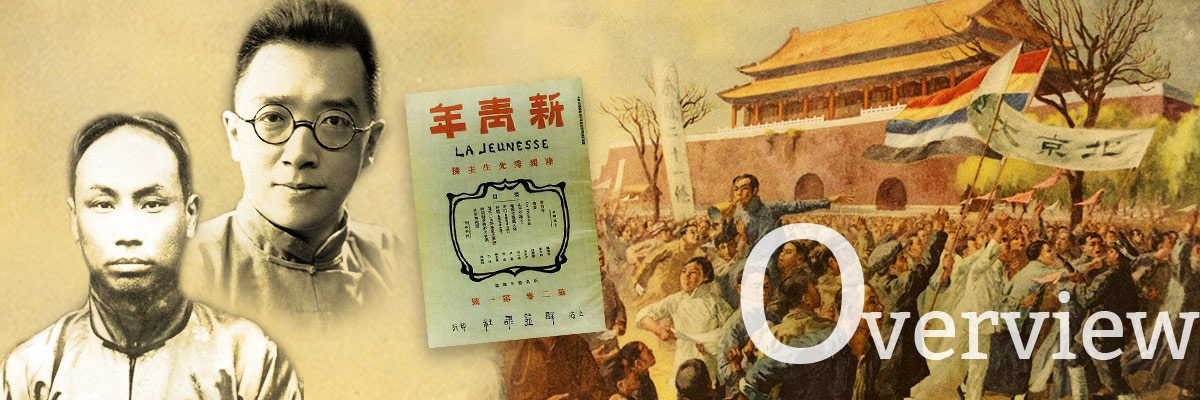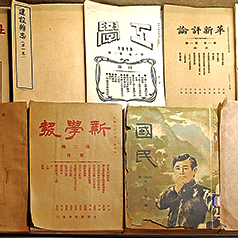The May Fourth Movement (五四運動) was a momentous event in early modern Chinese history. In a broad sense, it encapsulates the New Culture Movement (新文化運動) from mid-1910 to early 1920 and the May Fourth Nationalist Movement (五四愛國運動) that occurred between May and June in 1919; in a narrow sense, it usually refers only to the latter event. Though the May Fourth Movement and the New Culture Movement are kindred spirits with a close and mutually influential relationship, they differ somewhat in origin, nature, development and impact. The New Culture Movement (1915-1923) is an “anti-tradition, anti-Confucianism and anti-Classical Chinese language” cultural-intellectual reform that began with the founding of the Youth Magazine (青年雜誌) by Chen Duxiu (陳獨秀) on September 15, 1915. It largely ended when the journal became a key theoretical text of the Chinese Communist Party. The movement was pioneered by a number of intellectuals who had been exposed to new ideas through studying abroad like Chen Duxiu, Li Dazhao (李大釗), Cai Yuanpei (蔡元培), Hu Shi (胡適, also spelt Hu Shih) and Lu Xun (魯迅). It advocated democracy and science, called for a literary revolution, denounced traditional culture, promoted the use of vernacular Chinese over classical Chinese for the written language, and came up with radical slogans such as “down with the Confucian School” (打倒孔家店) and “total Westernization” (全盤西化).
The spirit of the New Culture Movement permeated Chinese thought, and gave rise to a patriotic movement that took place between May and June of 1919, commonly referred to as the “May Fourth Movement” named for the date on which it erupted. The movement grew out of the early Republic’s diplomatic failures - in particular, its inability to contest the Western powers’ unfair treatment of China in favor of Japan in resolving the “Shandong Problem”(山東問題) at the Paris Peace Conference. The resulting upsurge of nationalism among students and the masses set off the May Fourth Movement. On May 4, 1919, over 3,000 students gathered in Tiananmen (天安門) shouting slogans such as “struggle for sovereignty externally, get rid of national traitors at home” (外爭主權,內除國賊). This took the nation by storm and ultimately pressured the Chinese representatives into refusing to sign the Treaty of Versailles. After this initial victory, the New Culture Movement continued to flourish and many students left the country for work-study in France and study in Russia. These new developments led to the founding of the Chinese Communist Party and the reorganization of the Chinese Nationalist Party, with major and profound ramifications.









